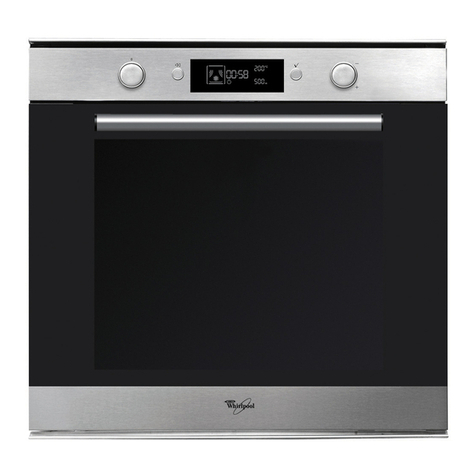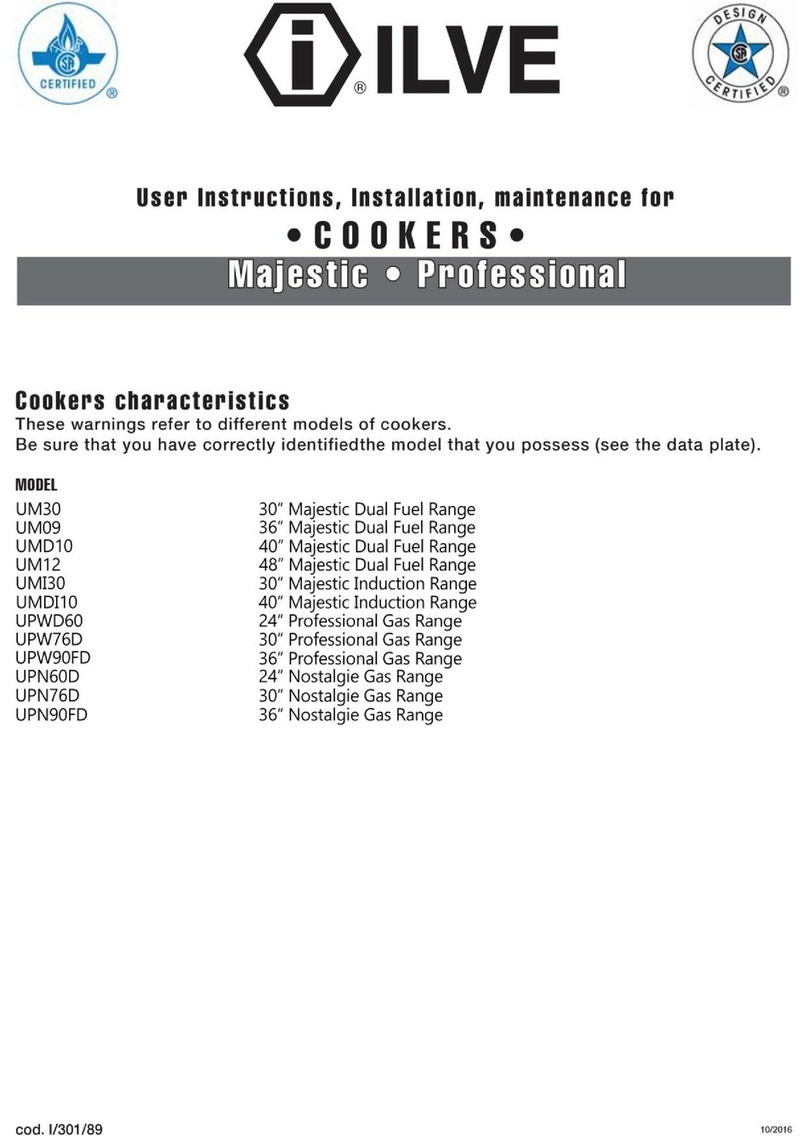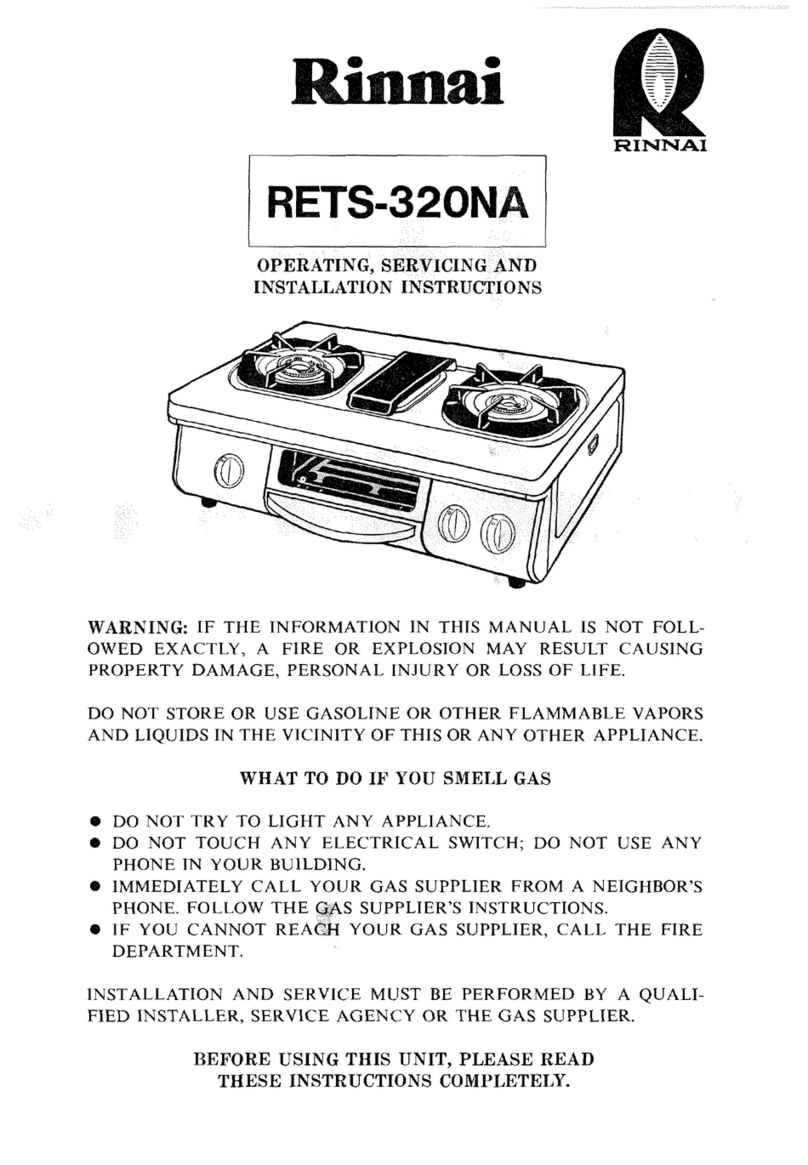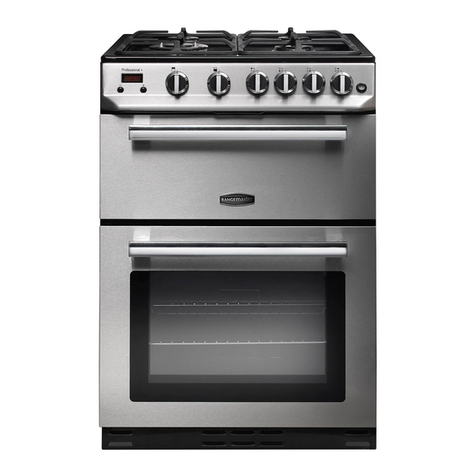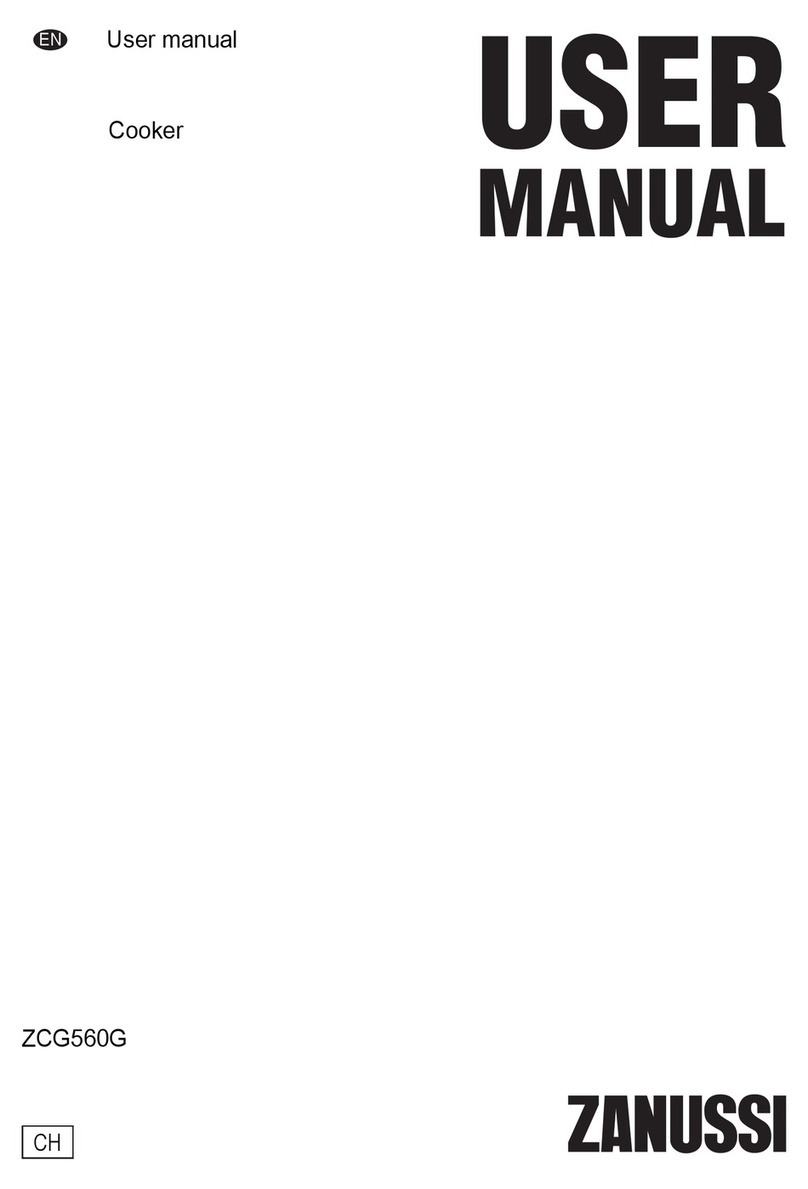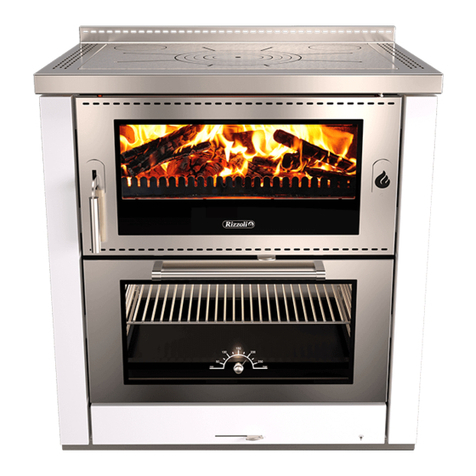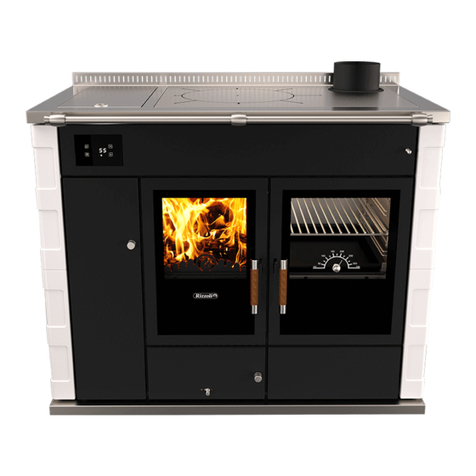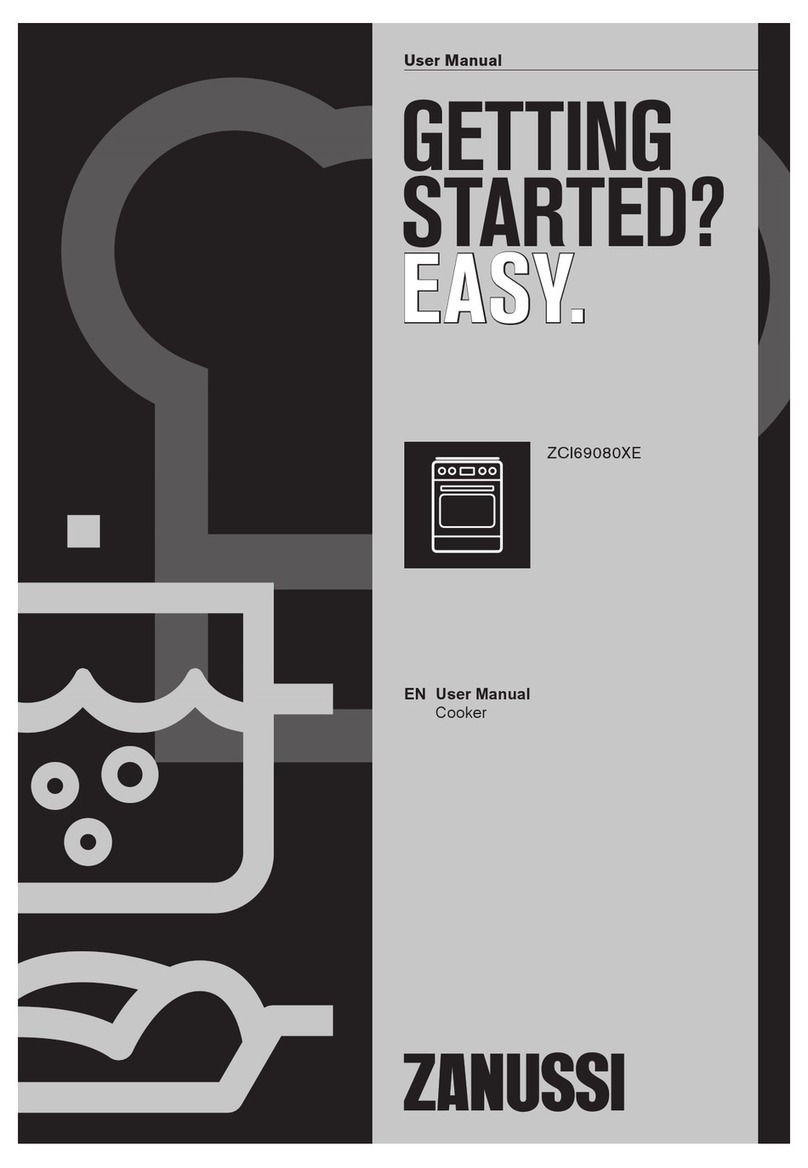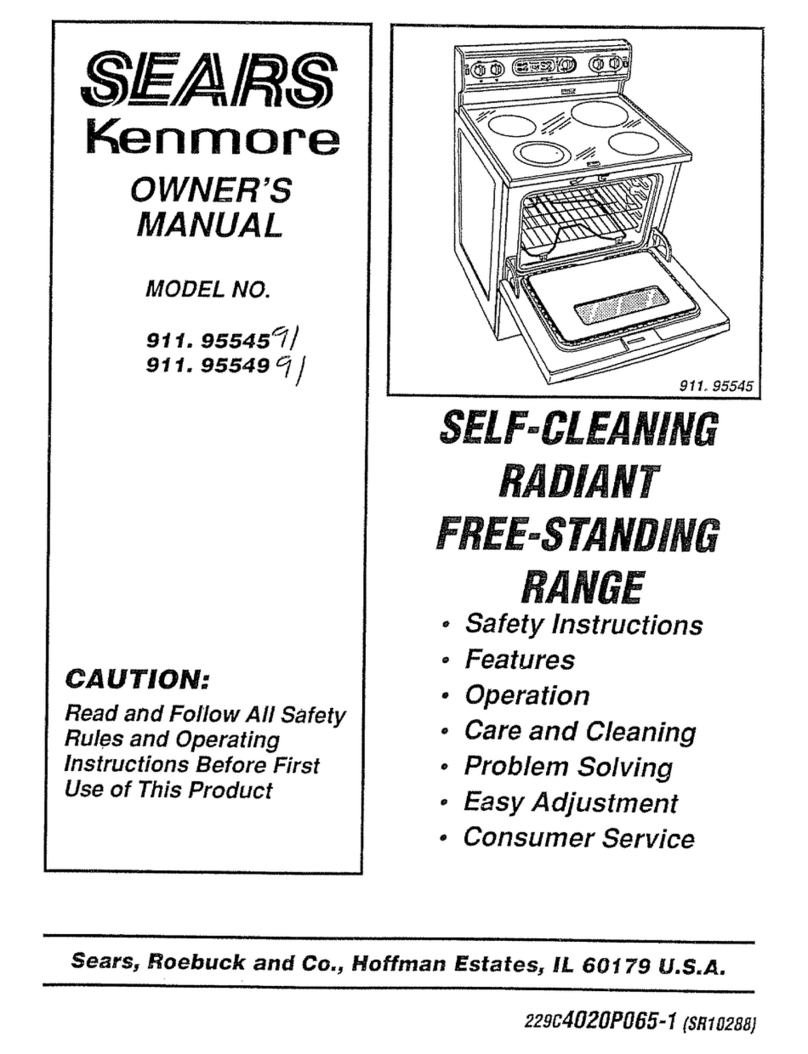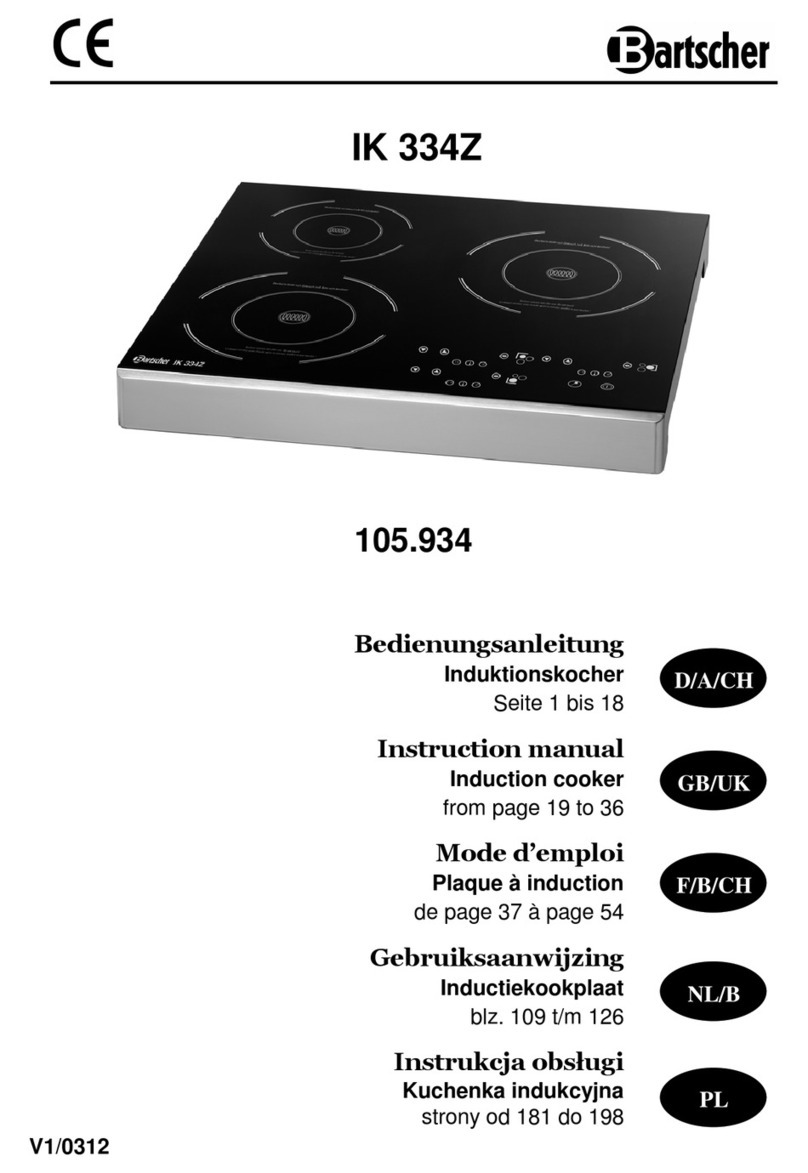62
The use of economic and ecologic combus-
tibles, the sweet warm of natural fire, the
sweet fragrance of the wood of our forests
are the qualities that make indispensable
wood fired cookers in every house.
Your choice fell upon a Rizzoli cooker, result
of a tradition started in 1912 when Carlo
Rizzoli began the production of wood fired
cookers with the typical style of the valley in
the dolomites. Year after year Rizzoli con-
tinued to refine its cookers using even more
advanced technologies, but without losing
contact with the elegance, the beauty and
the functionality of the original product.
1. INSTRUCTIONS
For the perfect working of Rizzoli cookers it
is necessary the correct placing and connec-
tion to the chimney, to AC power and to the
heating system if it is necessary. The installa-
tion normally ends when you light the cook-
er. It is necessary to predispose a duly made
chimney and well suited to the model you
chose. Before the connection of the cook-
er it is necessary to contact a local chimney
sweeper. The installation usually ends with
the lighting of the cooker and the verify of
the correct working.
It is necessary to use well dried and good
quality wood: it is also necessary to sweep
the chimney and the cooker regularly.
We recommend to read carefully the in-
structions in this booklet before starting to
use the cooker. Keep this booklet because it
could be useful in case of necessity.
Talking about the working and the instal-
lation of Rizzoli cookers, all the European
laws, national and local laws and rules must
be respected.
• Respect all the safety distances during the
installation of the cooker.
• The grids and the ventilation holes must
not be obstructed when you use the device.
• When using the cooker, some parts of the
device may be very hot, keep attention not
to lean and not to touch by hand hot parts
(frame, plate and doors).
• When you cook and generally when you
use the cooker you must not wear inflam-
mable dresses. • Keep more attention in
presence of children.
• Do not lean to the cooker inflammable or
explosive materials, in particular curtains
or very close to it, inflammable flacons and
aerosol bombs.
• The fire door must always be closed except
for lighting operations, fire feeding opera-
tions and during the maintenance opera-
tions.
• Check regularly the fume-circuit and, the
chimney connection and the chimney it-
self. At least every six months of normal
use contact an experienced technician for
checking and cleaning of the wood fired
cooker.
• The plate must be cleaned regularly ac-
cording to necessities after every use and
make regularly the specific maintenance.
• Before you go away for a long time, be
sure that the fire is terminated.
• The first lightings of the cooker and the
first seasonal lightings must be done with
temperate fire in order to prevent possible
breakings of the internal parts.
• After a long period in which you do not use
the cooker, check carefully that obstruc-
tions are not present and that the cooker
works regularly.
• Use only original or authorized spare parts.
• Do not make any unauthorized modifica-
tion.
1.1 GENERAL INSTRUCTIONS
1.2 SAFETY INSTRUCTIONS




















